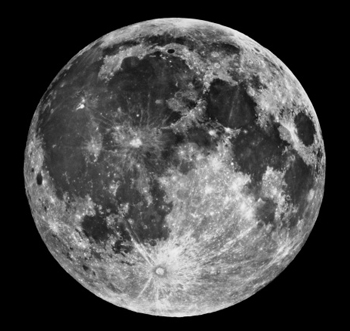[/caption]
The density of the Moon is 3.346 g/cm3. The Moon is actually the second densest moon in the Solar System after Io.
Need some comparisons? The density of Earth is 5.52 g/cm3. This makes it the densest planet in the Solar System. The density of Io is 3.53 g/cm3.
Astronomers believe that the Moon formed when a Mars-sized object crashed into the Earth. The resulting debris from the collision collected into orbit around the Earth and became the Moon. The Moon’s relatively low density comes from the fact that it was mostly the Earth’s upper mantle and crust that was thrown up into space, and not very much of its core.
The low density of the Moon means that it has less mass, and less gravity. If you ever get a chance to stand on the Moon, you’ll see that its gravity is only 16.5% the gravity of Earth. In other words, if you weight 100 kg on Earth, you would only weigh 16.5 kg on the Moon.
Want to know the density of other objects in the Solar System? Here’s the density of Jupiter, the density of the Sun, and the density of Saturn (the least dense planet in the Solar System).
Want more information about the Moon? Here’s NASA’s Lunar and Planetary Science page. And here’s NASA’s Solar System Exploration Guide.
You can listen to a very interesting podcast about the formation of the Moon from Astronomy Cast, Episode 17: Where Did the Moon Come From?

